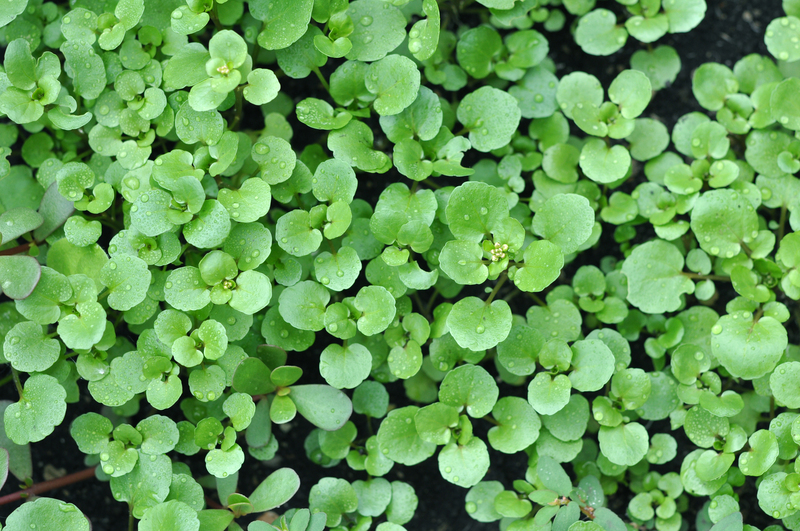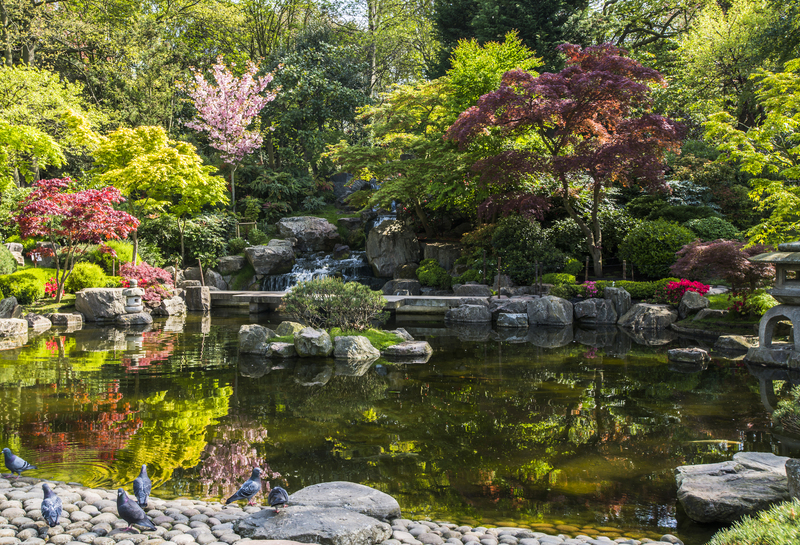Creating a Dog-Friendly Garden: Essential Tips
Posted on 24/06/2025
Imagine a garden where your canine friend can run, play, sniff, and relax safely--while you enjoy a beautiful, thriving outdoor space. Building a dog-friendly garden may seem like a challenge, but with thoughtful planning and the right strategies, you can create an environment that fulfills both your landscaping dreams and your furry companion's needs. Whether you have a large yard or just a small patch of green, creating a pet-safe and dog-friendly garden is certainly achievable.
Why Create a Dog-Friendly Garden?
For many pet owners, dogs are not just pets--they're family. Allowing your pet to enjoy the outdoors is vital for their physical and mental well-being. Dog-friendly gardens offer safe places for dogs to play, explore, and rest. When gardens are not created with dogs in mind, they might contain hidden dangers such as toxic plants, unsafe fencing, or sharp tools lying around.
Transforming your garden for your dog can:
- Protect them from hazardous plants and substances
- Prevent destructive digging and chewing behaviors inside your home
- Encourage exercise and natural canine behaviors
- Create a more harmonious coexistence between your family, your dog, and nature

Essential Elements in a Dog-Safe Garden
1. Secure and Sturdy Fencing
It is critical to prevent escapes and ensure your dog stays within your property. Dog-friendly fencing should be:
- Tall enough so your dog cannot jump over (typically at least 1.5 meters for medium-to-large breeds)
- Buried beneath the ground by a few inches to prevent digging under
- Free from gaps or weak points
Pro Tip: Add plants or shrubs along the fence line to reinforce boundaries and add extra security.
2. Choose Non-Toxic and Dog-Safe Plants
Many beautiful garden plants are unfortunately toxic to dogs. Before adding any new greenery, always verify its safety.
Common dog-safe plants include:
- Sunflowers (Helianthus annuus)
- Camellias (Camellia japonica)
- Snapdragons (Antirrhinum majus)
- Basil and other safe herbs
- Rosemary
- Blueberries, strawberries, and other dog-friendly fruits
Plants to avoid in a pet-friendly garden:
- Lilies
- Oleander
- Azalea
- Foxglove
- Sago palm
- Daffodil
- Tulip bulbs
Having a list of safe and unsafe plants is vital for dog garden safety.
3. Durable, Paw-Friendly Ground Coverings
Traditional lawns are attractive, but dogs can quickly wear bare patches or get muddy. Select ground coverings that:
- Are soft on paws--such as clover, buffalo grass, or creeping thyme
- Quickly recover from trampling
- Are safe if chewed or eaten
Alternatives to grass for a dog-friendly backyard:
- Mulch (avoid cocoa mulch, which is toxic to dogs--opt for cedar or pine)
- Gravel or smooth pebbles (ensure it's not small enough to swallow)
- Paving stones for high-traffic paths
Tip: If your dog tends to dig, create a designated "digging zone" filled with sand or loose soil to protect other garden areas.
Designing with Your Dog in Mind
4. Provide Shade and Fresh Water
Just like humans, dogs need protection from extreme heat and sun. Consider:
- Planting trees or tall shrubs for natural shade
- Adding a pergola, shade sail, or doghouse
- Ensuring there's always a bowl of clean, fresh water available (portable fountains are ideal for garden use)
Always check the temperature of patios and stones before allowing dogs to play on hot days to avoid burnt paws.
5. Safe Play and Exercise Areas
Dogs love to run, chase, fetch, and socialize. Design open play spaces in your garden by:
- Leaving a clear, unobstructed lawn or synthetic turf area
- Creating winding paths and trails using dog-safe materials
- Adding agility obstacles like tunnels, hurdles, and ramps for interactive play
Rotate toys often and provide mental stimulation to keep your garden dog-friendly and engaging.
6. Hidden Hazards and Pet-Proofing
A dog-friendly garden design prioritizes safety. Regularly check for hidden dangers such as:
- Sharp garden tools or sticks
- Toxic pesticides, slug pellets, or fertilizers--switch to organic or pet-approved products
- Ponds or water features--if you have these, ensure they are shallow or covered to prevent accidental drowning
- Compost bins--keep lids secure, as moldy organic matter can be poisonous to dogs
- Escape points along fences or gates
Regularly inspect your garden for changes that could affect your dog's safety, especially after storms or landscaping projects.
Enhancing Your Dog's Experience: Fun Features & Training
7. Sensory Stimulation and Canine Enrichment
Gardens are a sensory paradise for dogs. Add variation and interest with:
- Sniff zones: plant fragrant, non-toxic herbs like mint, lavender (in moderation), and basil
- Seeing and hiding spots: build tunnels, provide willow teepees, or allow tall grasses for exploration
- Water play: for water-loving dogs, shallow splash pools are great in summer
Mix textures and scents to turn your dog-friendly garden into a true canine wonderland!
8. Designated Bathroom Areas
Potty training in a garden setting helps keep your lawn lush and odor-free. Assign:
- A specific "toilet zone" with pea gravel, artificial grass, or mulch--easy to clean and maintain
- Training markers to guide your dog to the right spot
Reward your dog every time they use the designated spot--this reinforces good behavior and keeps the rest of your yard beautiful.
9. Preventing Digging and Other Unwanted Behaviors
Dogs dig for fun, comfort, or to hunt critters. Minimize destruction by:
- Offering a sandbox or digging pit as an alternative zone
- Reinforcing flower beds with rocks or decorative fencing
- Using natural deterrents like coffee grounds, citrus peels, or dog-repellent sprays (test these first for safety and effectiveness)
Keep your dog stimulated with toys and interactive games to discourage boredom-induced digging.
Maintenance Tips for a Thriving Dog-Friendly Garden
Consistent and safe maintenance practices make all the difference in keeping your dog-friendly garden healthy for both your pets and your family.
- Choose organic lawn and plant care products--Chemical treatments can harm dogs if ingested or absorbed through their paws.
- Keep grass and shrubs trimmed to discourage ticks and pests.
- Rinse your dog's paws after playing outdoors, especially if any garden treatments or mulch has recently been applied.
- Pick up waste regularly to prevent odor and maintain hygiene in high-use areas.
- Rotate activities and supervise your dog to prevent overuse and wear in specific spots.

Frequently Asked Questions About Dog-Friendly Gardening
What plants are safe for a dog garden?
Most herbs (except chives and garlic), sunflowers, snapdragons, rose bushes (avoid thorns), marigolds, pansies, and strawberries are great choices for a safe dog yard. Always check plant labels and consult with your vet or a reputable gardening resource.
How can I prevent my dog from digging in my garden?
Redirect this energy by providing a dedicated digging area, reinforcing vulnerable spots, and rewarding your dog for using the correct space. Engage them with plenty of play and exercise to satisfy boredom.
Are mulch and gravel safe for dogs?
Only use pet-safe types: pine, cedar, or untreated wood mulch (never cocoa mulch) and large, smooth gravel. Avoid anything that can be swallowed or causes splinters.
Can dogs drink from garden ponds?
Discourage drinking from ponds, which can harbor algae or chemicals. Provide a constant supply of fresh, clean water for your dog instead.
Conclusion: Enjoying Your Dog-Friendly Outdoor Space
Designing a dog-friendly garden is not just about preventing hazards or damage--it's about embracing an outdoor lifestyle that brings joy to both you and your pet. With a careful selection of plants, secure fencing, shaded rest areas, safe ground cover, and enriching play features, your garden can become a paradise for paws and people.
Whether you're starting your pet-friendly garden from scratch or modifying an existing backyard, remember the golden rule: always put your dog's safety, happiness, and natural behaviors at the heart of your gardening plans. The payoff is a beautiful, worry-free oasis where tails wag and flowers bloom--a true home for the whole family.

